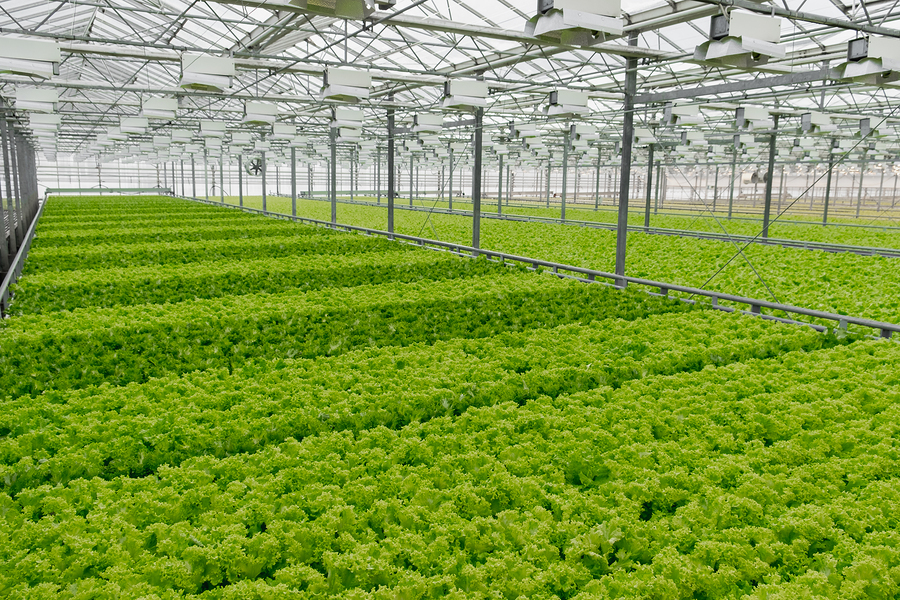Can Hydroponic Cannabis Cultivation Really Help You Get Bigger Yields in Less Time?

One sign of the growing “legitimacy” of all things cannabis the increasing amount of scholarly research on a subject matter that used to be “hush-hush.” The interests in the environmental potential of hydroponic farming in general has drawn researchers to focus on its application in cannabis cultivation.
And, there is increasing evidence that hydroponic cannabis cultivation really can help you get bigger yields in less time.
New Zealand, for example!
As an island nation, New Zealand has only so much arable acreage. Hydroponic farming has the potential to raise more per square foot in more manageable seasons.
Gleynis Knight lead a group of university researchers out of Auckland in a study published in Forensic Science International. The study was actually commissioned to provide evidence in court proceedings against illegal cultivation, to help courts determine the severity of the offense, to determine the income derived.
“The aim of this study was to ascertain the potential yield of Cannabis female flowering head which could be obtained from crops of six plants grown in a given area using a particular growing method (ScrOG).”
The research focused on three tracks:
- Observing phenotypes
- Analyzing THC levels of the plants grown
- Analyzing DNA
And, their results showed:
- Of the 18 plants grown, the yield varied between a maximum of 47.27 oz. and 11.99 oz. of dry, groomed female flowering head per plant, with an average of just over 1.5 lb. of head per plant.
- It is possible to obtain THC levels up to a maximum of 30% from Cannabis plants available in New Zealand.
- DNA analysis distinguished distinct groups of plants in general agreement with the phenotypic variation observed. Two plants with Sativa characteristics produced significantly higher THC levels.
Great Britain, for example!
C. Bone and S.J. Waldron represented Forensic Science Service laboratories in Birmingham and Chepstow respectively in research published by United Nations Office of Drugs and Crime (UNODC). This was another attempt to analyze the “illicit” indoor cultivation of cannabis.
Their conclusions about the increasing shift to indoor cultivation effectively analyzed the role of hydroponics:
- Fast growth. Hydroponics maintain a constant supply of nutrients of known composition and to control the number of hours of light from powerful electric lights. This accelerates vegetative growth and induces flowering at will. This means earlier yields and more harvests a year.
- High yields. Less competition for nutrients and water means less extensive root growth, so more plants grow per unit area, from three to four harvests achieved annually.
- Clean and sterile. Inert sterile growing media make it easier to maintain a clean, infection-free environment, reducing the potential for pest diseases.
- Lower risk. The risk of overwatering is automatically diminished in hydroponics because the root region is well aerated.
- Prolific. The cannabis plant can complete its growth cycle, producing more female flowers for harvesting.
- Quality control. Plants can be cloned from cuttings taken from specially selected mother plants that are known to be of a variety high in THC. The result is similar female plants with a high THC content.
- Clandestine. Hydroponic systems allow people to raise cannabis out of public view and law enforcement scrutiny.
Their study of hydroponic cultivation observed cuttings are “typically grow to a height of about a metre before they are transferred to another area to flower.” High-wattage lamps are used, and timers reduce the hours of light per day to prompt the plants to flower. If they are not pollinated, they produce prolific female flowers high in THC. If these processes are followed properly and the irrigation feeds adequate nutrients, “three to four harvests a year are easily possible.”
The internet verdict, for example!

The internet is packed with opinions on a feud between those who favor organic cultivation and the hydroponic proponents. Opinions fill forums with views pro and con.
For instance, according to Independent Drug Monitoring Unit, hydroponically cultivated plants tend to yield the same as those raised organically. More specifically, short-medium plants yield the same, but taller plants yield more.
But, THC Farmer disagrees, “I have to respectfully disagree that hydroponics will yield higher than organics. There is a difference between growth rate and the yield. Because something grows faster does not mean it yields more in the same space. If you factor in time for veg growth, hydroponics will have the edge in yield. If you have a separate veg area, that timing issue is irrelevant.”
Perhaps, the Colorado Pot Guide puts it the most clearly, asserting that hydroponic growth (which includes any method that does not use soil as its growing medium):
- Maximizes yields
- Provides just the right amount of nutrients
- Avoids soil borne diseases and pests
- Larger yields
- Controls problems more easily
- Maximizes use of space
- Faster yields
- Produces better looking product
- Automated cultivation
Grow Weed Easy makes similar claims:
- Faster vegetative growth than any other growing method, which can result in harvests that come in sooner.
- Experienced hydroponic growers usually get bigger yields than experienced soil growers - given the same conditions.
- Of all the grow types, hydroponic growers are least likely have their garden attacked by bugs or pests. Many pests need soil as part of their lifecycle, and many growers accidentally introduce pests into their grow room when buying new soil.
Frequent unsettled arguments claim soil raised cannabis has better taste. It’s clear that hydroponic cultivation comes at a higher price in terms of gear and maintenance.
The hydroponic future
The cannabis economy will determine the future of cannabis farming. If hydroponic methods produce more volume, more frequently, and more efficiently it will rule weed farming. It simply enables maximum and quality controlled outputs in processes that enable the seed to sale tracking state regulation will require. If you’re look to invest in the canna-economy, hydroponics offer the best option.

